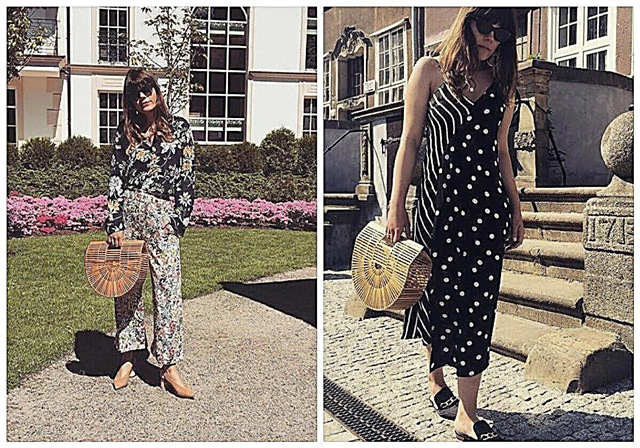There are different ways to handle pockets. Consider an unusual and interesting way to make a pocket with a lining, not only on the burlap side, but also on the shelf side - with a double lining.

In order to carry out one patch pocket on a double lining, it is necessary to prepare and duplicate the shelves of the coat, as well as to cut from the main fabric a burlap pocket with one-piece cut and two lining details.

Lining detail located on the side of the pocket 4 cm shorter than the finished pocket. The lining detail, which will be located on the side of the shelf, is 2 cm shorter. After that, reduce the lining details by 0.3 cm on each side so that the finished lining does not protrude from under the pocket part from the main fabric.
How to make a pocket with a trim barrel
In addition, you will need:

- glue or non-glue doubler;
- disappearing marker for fabric or tailor's chalk;
- threads, tailor pins, scissors, ruler;
- threads for decoration.
Step 1

On the seamy side of the burlap pockets of the main fabric, mark the inflection line (top of the pocket), and also draw a line below about another 4 cm.
Step 2

In the form of the resulting rectangles, cut out the details from the duplicate fabric.
Step 3

Duplicate (glue) the area below the entrance to the pocket.
Note: my fabric cannot be ironed, so I use non-adhesive doublerin - I attach it with hand stitches.


Fold the pocket parts from the main fabric and from the lining fabric (which is 4 cm shorter than the finished pocket) with the front side to the front side and lay a stitch. So we connected the hem of the pocket with its lining.
Step 4

Unscrew the lining for allowance and delay it at a distance of 1-2 mm from the bend.
Step 5

On the shelf, mark the pocket space with basting stitches.
Processing the inner pocket in outer clothing
Step 6


If duplication of the shelf is not expected in the coat, then the pocket attachment point must still be duplicated: with thin adhesive doubler or thin non-adhesive material. I duplicate organza - I attach with manual stitches.
Step 7


On the front side, lay another marking line - 2 cm below the line of entry into the pocket.
Step 8

On the part made of lining fabric (which is 2 cm shorter than the finished pocket in the finished form), iron the upper allowance.
Step 9

Fill the lining with the front side to the front side of the shelf, aligning the fold with the marked line so that the burlap pocket is located above the fold. Pin or sweep.
Step 10

Lay a line along the bend without going into allowances.
Invisible patch pocket processing: couture fashion
Step 11

Unscrew burlap sack down and iron.
Step 12

Burlap of the pocket from the main fabric, connected to the lining, bend along the inflection line inside out and lay the part on the shelf, combine the fold with the marked line of entry into the pocket.
Step 13

Unscrew the burlap of the pocket from the main fabric up (on the shelf), leave the pocket lining to lie. Commit.
Step 14

Combine two pocket linings on the bottom and side. Sweep along the grind line.
Step 15

Stitch both linings to the shelf with a single line, starting and ending exactly at the line of entry into the pocket (grabbing a one-piece edging). Remove the mark.
Max Mara seam pocket
Step 16

Iron the oversizes of both linings or sweep onto burlap.
Step 17

Iron the burlap allowances from the main fabric onto the burlap and sweep. The lower corners can be cut diagonally.
Step 18

Unscrew the burlap of the pocket from the main fabric down the inflection line, covering it with the details of the linings attached to the shelf.
Step 19

Pin or sweep.
Step 20

Sew burlap manually with countertop stitches.
Lined patch pocket processing
Step 21

To iron a pocket. If necessary, flash along the top edge of the pocket with a forward-backward-needle seam.



Note: if you do not want the gun to be visible (it also had a decorative function), then you can fire the gun from the inside with a goat seam in step 12.

The pocket is ready!
The author of the master class and photo: Daria Tabatchikova

By education, Daria is a PR specialist and economist, but several years ago she devoted herself entirely to her favorite business - sewing.
She learned to sew from magazines, books and using the Internet, there are also sewing courses in the arsenal, but Daria considers herself to be self-taught. She loves to study specialized sewing literature from different years and countries, and then put her knowledge into practice.
At the end of 2017, Daria became the winner of the festive contest from BurdaStyle.ru.
She leads her Instagram page and VKontakte group.
Material prepared by Julia Dekanova



